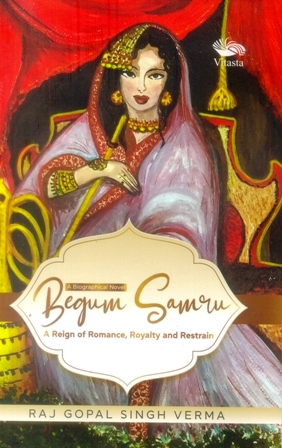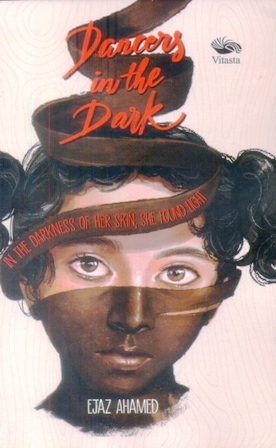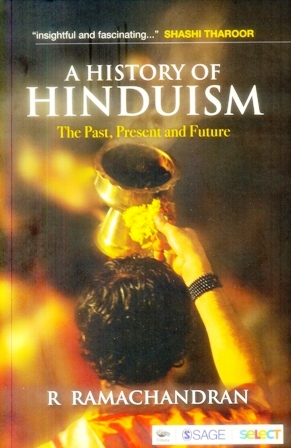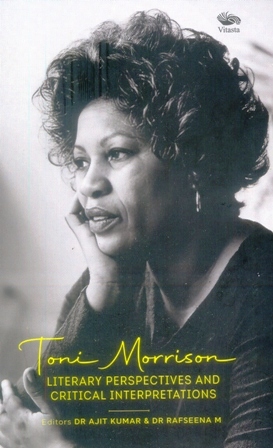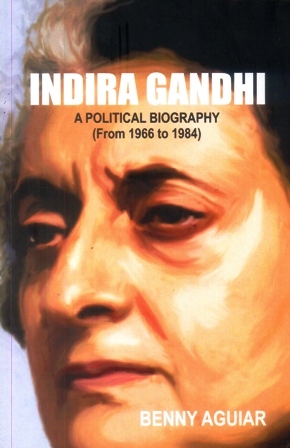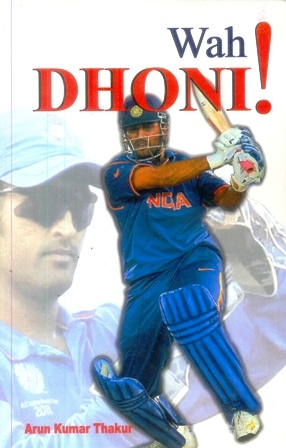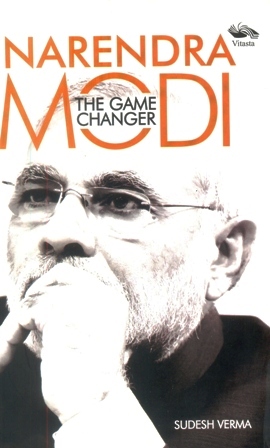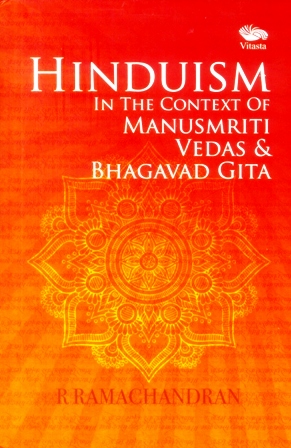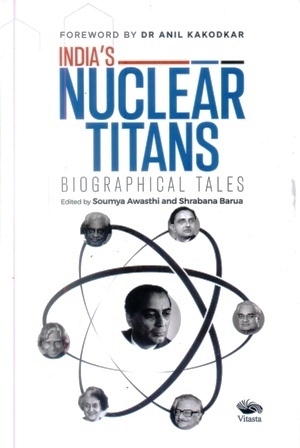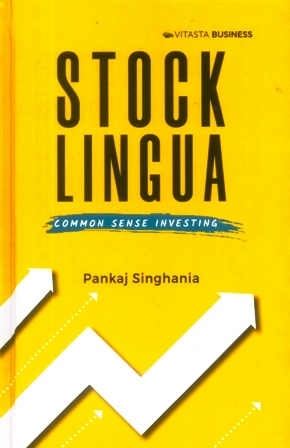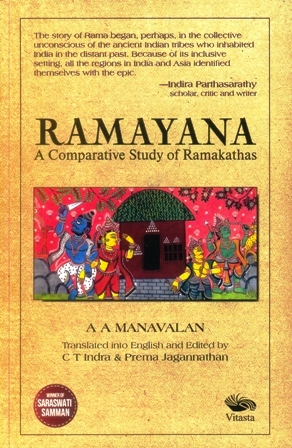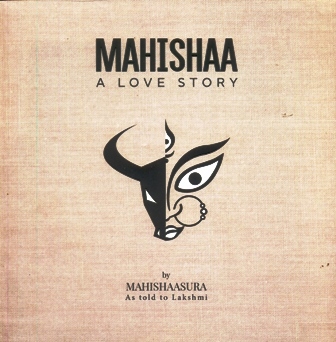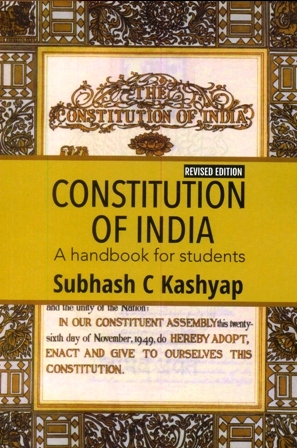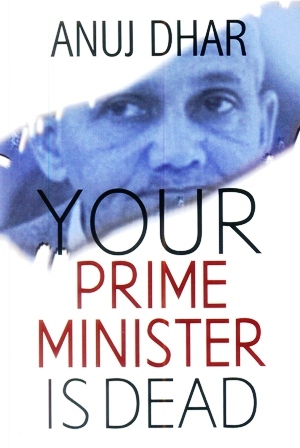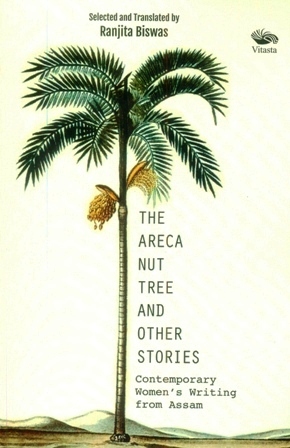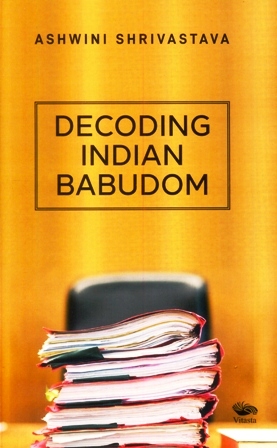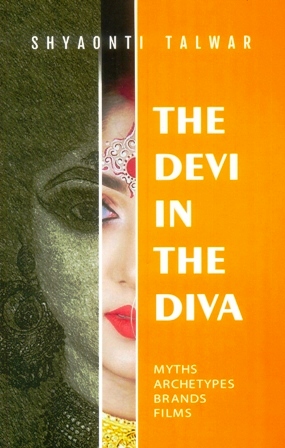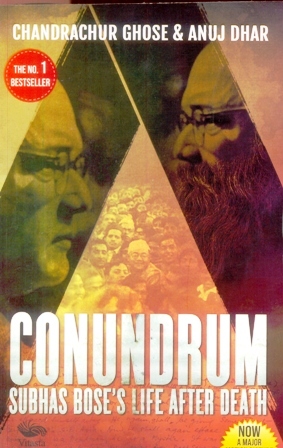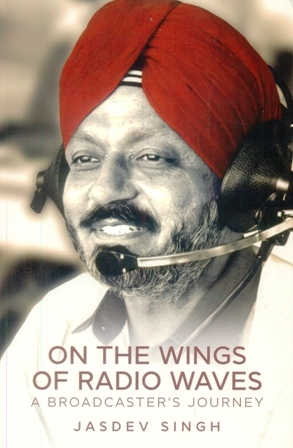-
Begum Samru A Reign of Romance, Royalty and Restra
This is an extraordinary tale of a seemingly ordinary nautch girl who ruled over the province of Sardhana for almost fifty-eight years. She cast a spell on the world with her beauty, intelligence, valour and diplomacy. This biographical account accompanies the matriarch in her transformative journey from a girl named Farzana to Begum Samru. Her story has its fair share of war, politics and diplomacy alongside love, betrayal, conspiracies and ruthlessness.
-
Dancers in the Dark
Extreme poverty wasn't the only impediment in seven-year-old Kalki's life. Her pitch-black dark skin exacerbated her plight, making her a centre of ridicule in her village. Believing he's the cause of his sister's affliction, Karthi joins Kalki's side as they become consumed with ways to whiten her skin. But the determined siblings invite more trouble and lose their mother's life savings. Their journey to retrieve the money brings together a mysterious ally, an exotic festival, a divine intervention and a con artist changing their destinies in ways no one could have predicted.
-
A History of Hinduism
IS THE HISTORY OF HINDUISM, THE HISTORY OF BRAHMANAS FROM RIGVEDIC TIMES TO THE PRESENT? Or, does the story of Hinduism begin with the descriptions of the ancient roots as revealed by archaeological findings and the evidence from present day tribal, village and regional cultures? This book looks at both. The history of Brahmanas, tracing their lineage to the fifty-odd Rigvedic poets, is dealt with through the chronological ordering of the Sanskrit texts which were first handed down to us as oral narratives from Gurus to shishyas. The circumstances and purposes for which these texts were written is examined, along with events of a true historical nature. This is followed by a sequential treatment of Hinduism as a ‘Rigvedic religion’, the two Mimamsas, Buddhism, Jainism, Dharmasastras, the Epics and the Puranas. The growth of Hindu temples, the role of Adi Sankaracharya and the Bhakti movement is delved into, and the influences of Muslim and British rule of the subcontinent on Hinduism is analysed. The author explores one major reason for the survival of Hinduism—the support of prehistoric tribal and village cultures which were not modified or destroyed by the later-day Brahmanas. Much of tribal and village deities and practices were co-opted into concurrent Hinduism, so-much-so that today these cannot be separated from mainstream Hindu practices and traditions. They exist in all their colourful glory to this date and make Hinduism vibrant. It is these ancient folk religions that provide a stable foundation for the survival of Hinduism, argues author R Ramachandran, presenting in this book an all-encompassing landscape view of Hinduism as it has been for the last five thousand years. Finally, the present status of Hinduism is discussed along with its survival in the future.
-
Toni Morrison
Toni Morrison’s impactful works provide powerful commentary on the complexities of race, identity, gender, and power relations in the US. This edited volume, Toni Morrison: Literary Perspectives and Critical Interpretations, presents insightful critiques and commentaries by renowned academicians, researchers and scholars. It offers readers the opportunity to reflect on the lessons Morrison wanted them to learn and unlearn.
-
Indira Gandhi - A Political Biography
Twenty years after her death, study on Indira Gandhi still exercises an interest. A chronicle of the years between 1966 and 1984 during which, except for two or three years, Indira Gandhi was India's Prime Minister. The book is a historical study of the tumultuous events in which Indira Gandhi played a dominant role. The author has tried to piece together these momentous events into an integral narrative so that it reads like a story Father Benny Aguiar delves into his memory to write about the period when Indira Gandhi dominated the Indian politics. Indira became the Prime Minister of India in 1966 and remained so, barring the period 1977-79, till her assassination in 1984. She had a colossal presence and the history of India of this period got closely interwoven with her story. It is in this sense that the book is important. It is not a historical record of events, which many other books have already done. Father Aguiar recounts from his experiences of the period to produce an emotional history that helps understand the situation as it existed then. It is a close brush with reality and tries to make an assessment about the various feelings that shaped Indira s decision-making. He does not justify the Emergency but tries to understand why Indira Gandhi, who was a democrat, imposed a system that she was going to denounce when she came to power again in 1980. She spoke about the country needing a healing touch. Not in a thousand years, she said, would the need arise for another Emergency. Indira Gandhi was an enigma for most of her colleagues. She was politically smarter and could see through the events. This is why she upstaged most of them during her struggle for political survival. In doing so, she kept losing friends one after the other. Gradually her son Sanjay Gandhi was the only one she could rely on. The mother and son duo used to coordinate their activities for running the affairs of the country. But fate snatched away Sanjay from her and left her crest-fallen. She gathered the loose strings and began the task of governance. Indira Gandhi took tough and controversial decisions during her premiership. It is natural for people to dissect them post facto. A real understanding, however, will emerge only if the situation of that time is simulated. Father Aguiar tries to do that. This is probably for the fist time that a book tries to highlight the role played by various Christian organisations during the numerous crises facing the nation during this period whether it was the Emergency, riots, relief or rehabilitation. The book also talks of the meeting betweenVatican chief Pope John Paul II and Indira Gandhi.
-
Wah Dhoni!
one hurdle after another with a quiet determination, to reach the most coveted spot in national cricket, that is captaincy of Team India, in all three formats of the game. Unlike other books, where statistical details flood the pages, here they have been kept to a bare minimum. The attempt is to enable Dhoni's fans to know several hitherto unknown or unpublicized facts related to his younger and struggling days, his temperament, his family, his beliefs and the changes he has brought to the dressing room atmosphere - his story proves the axiom that champions do not depend on ideal conditions to reach the top, they rather adapt themselves and overcome the conditions made available to them - Indeed! this is the story of a local boy, who quietly dreamt big and went on to realize his dream - earning a permanent place in the history of Indian cricket, that too within such a short span of time.
-
77 Shades Of Green
77 shades of Green is about fortitude, resilience and defiance. An incredible true story of a wing commander from pre-independent India till today. This unique and fast-paced autobiography of hope and optimism gives first hand information about the 1962 indo-china war and the 1965 & 1971 India-Pakistan conflicts. Wing commander vijayan’s book chronicles the events starting from early 1940s, the birth and evolution of modern India and the Indian Air Force. Written in a distinctive style, this book offers a rich insight into the experiences of a person who lived through the decades of changes that defined a nation.
-
Narendra Modi The Gamechanger
Narendra Modi-The Gamechanger for the first time, Modi has been quoted in any book talking about the hitherto untouched aspects of his life. The book is based on extensive interviews of the Gujarat Chief Minister and his close relatives about the influences that shaped his thoughts and actions. The 400-plus pages talk about the inspiring stories that made Modi what he is today—how he evolved as a man of development and empowered people with his decisions, and how he faced the poison-laced barbs of his critics who were ready to tear him to pieces for a crime he never committed. Modi's journey from a tea-seller to becoming the prime ministerial candidate of the opposition National Democratic Alliance (NDA) has been one of struggle, dedication, determination, hard work and perseverance. Since his childhood, Modi has been an early riser. He does not go to bed until he has finished his work. An average Indian finds his own reflection in the struggle of Modi. Like Modi, he can dream big. Yes, he can! When he was a young boy of 13, he received a near-fatal injury due to attack by a crocodile in the Sharmishtha Lake he swam daily. He was bed-ridden for more than a week. “It hit like a sword on my ankle,” he said and showed to the author the scar he got due to the nine stitches. Modi was a victim of child marriage, a usual practice in the backward Ghanchi caste, but his desire to serve larger causes persuaded him to skip the final stage of the three-stage marriage. When he left home to become a wanderer in search of truth, he took formal leave of everyone, including his mother. The Modi family had ancestral links with Rajasthan. How Modis became a backward oil pressing community in Gujarat is baffling? Some say that the original backward Modis migrated from Bihar, where there are still people with the Modi surname in oil pressing trade.
-
Had Patel been Prime Minister
India repeatedly swears by democracy but we forget how undemocratically we selected our first prime Minister. Of the 16 Pradesh Congress committees across the country, 15 opted for Sardar Vallabhbhai Patel while one chose Acharya J B kripalani. This book asks the pertinent question, What if Sardar Patel had been India’s first prime Minister? Would India’s political and development trajectories be different it also discusses Patel’s thoughts on Partition and the East Bengal problem that finally led to the formation of Bangladesh. His views on independent princely states, on China and Communists and his views on planning and economic outlook are also explored. The IFS and buts of history are of course debatable. But was this a decision that changed the destiny of a nation and its people?.
-
Hinduism:In the Context of Manusmriti, Vedas and B
Hinduism is often difficult to comprehend due to its ancient origin, multifariousness, vastness and absence of one authority. No book on Hinduism, therefore, can be complete. This book, however, tries to attempt a well-documented and holistic view of Hinduism from historical and sociological perspectives. It intends to serve as a basic introductory text. The presentation is based on a first-hand reading of Hindu scriptures in Sanskrit combined with knowledge of social sciences. The emphasis is on three major Hindu scriptures: the `Bhagavad Gita', the `Manusmriti' and the `Vedas', particularly the Rigveda. These three texts constitute the basic framework of Hinduism. This book provides adequate information about the three scriptures and discusses in detail terms such as gotra, jati, varna and dharma. It also discusses the issue of divine punishment for violating the dharma. The book provides a detailed history of the origin of the culture and religion that flourished along the Indo-Gangetic Plains. It discusses migrations, their impact and the emergent civilizations. The objective is to understand how the religion evolved with people. It also studies the recent developments, particularly the impact of science and technology with regards to the Hindu society. Whether the Rigvedic values are relevant today have also been explored
-
Making Sense of Ayodhya Verdict
captures the background of archeological, historical and political aspects of the issue and lays the foundation of understanding the current debates. Tracing the evolution of the dispute and its political implications, the book goes on to present the intellectual atmosphere in the country post-judgment and gives a perspective about different facets of the consequences of the verdict. It gives the sample of the verdict by giving the major excerpts of the judgment, the opinions of all the three judges and the editorial opinions from different points of view. It includes the interviews of one of the judges, major intellectuals, writers and social activists. It also incorporates the chronology of events related to the dispute.
-
India’s Nuclear Titans
No nation debated more democratically than India on whether to get or give up nuclear power guns,’ writes George Perkovich, renowned American political scientist. Right from 1948, when the Atomic Energy Commission was established to the peaceful nuclear explosion in 1974, to Operation Shakti in 1998 when India went overtly nuclear, and then the Indo–US Civil nuclear agreement in 2005, every step was arrived at after much debate and deliberation. Rejecting discriminatory treaties like the NPT, taking a firm stand on the nuclear deterrence theory and standing up to superpowers despite heavy sanctions paved the way for India’s nuclear exceptionalism, thereby revealing not only the astounding brilliance and capability of the leaders and thinkers in the field but also India’s strong moral and ethical value system, which has played a major role in all its decisions. The book, India’s Nuclear Titans, traces the evolution of India into a nuclear state while analysing the role played by stalwarts like Homi Bhabha, Vikram Sarabhai, Abdul Kalam, Indira Gandhi, K Subrahmanyam, and Arundhati Ghose among others. Through interesting anecdotes from the lives of these great personalities, the book aims to give a brief but complete picture of India’s nuclear story.
-
Stock Lingua Common Sense Investing
Are you afraid to invest in the stock market? Does the seeming complexity of the investment world intimidate you? Is it just the fear of the financial risks involved? Or do words like market volatility, risk tolerance, debt-to-equity ratio, blue-chip stocks give you cold feet? India’s top fund manager, Pankaj Singhania believes that one doesn't need to be a wizard to create wealth through mindful investments. It is more about the right thought process, common sense and discipline rather than complex technical jargons. His book offers a simple but effective investment philosophy for everyone. The objective of the book is to create more aware and knowledgeable investors rather than technical experts. The strength of the book lies in the fact that it is not based on theory or hypothesis, but on the practical experience of a highly successful wealth manager.
-
9 Selected Detective Stories
A good crime story compels us to step into the shoes of both the detective and the criminal. There are few literary joys comparable to the euphoria one experiences while tracing the steps from the crime scene to the moment the culprit is unveiled. From the ornate plotting of Edgar Allan Poe, to the shrewd twists of a tale by Arthur Conan Doyle to the hardboiled texture of Raymond Chandler, this anthology showcases some of the greatest mystery authors at the height of their prowess. Thrilling and haunting in equal measure, these stories won’t leave the reader’s mind after the last page has been turned.
-
Ramayana: A Comparative Study of Ramakathas
The story of Rama has been a part of our lives for ever and will probably continue to be so…. But most of us are unaware that the story has as many variations as there are versions. In the author’s own words Valmiki’s Ramayana has taken several ‘incarnations’ due to the efforts of many great writers who wanted to bring the story to their own people in their own language. In his book, Professor AA Manavalan, an eminent scholar in the field of comparative literature, has painstakingly made an intensive and analytical study of the Rama story in 48 languages including the folk tradition. Professor Manavalan’s main focus is on how the receiving language’s rendering could make a greater impact than the original in the popular imagination of the people. Ramayana - A Comparative Study of Ramakathas, an English rendition of Ramakaathaiyum Ramayanangalum, presented by CT Indra and Prema Jagannathan, captures the thematic purpose of Prof AA Manavalan’s Tamil original and creates a forum ‘to discuss whether Ramayana is an ethical text or an ideological text’.
-
Mahishaa: A Love Story
Everyone knows the epic story of the Devi killing Mahishaasura. Mahishaa’s fault was that he was not prepared to fit into a conformist box. So, this cannot be a classic Good vs Evil tale. In the middle of the city, there was a dilapidated Kaali temple. Its condition was so because both the devotees and the priests were alien to love, although this was supposed to be the primary concept in places of worship. It was at such a time that a devotee decided to return the temple to its traditional practices of worship. This is accomplished in a pact with Kaali by the devotee becoming Mahishaasuramardini’s Mahishaa. What happens next is a marvellous cascade, flowing from the pen of poet Lakshmi Bayi.
-
Constitution of India
The Constitution provides a legal framework for a nation, where citizens pledge to abide by the rule of law and protect the sovereignty of the country. India has a written Constitution, which was created following four years of intensive debates among different stakeholders, all their concerns addressed and inputs incorporated. This makes India’s Constitution unique as the British, who ruled India till 1947, Do not have a written Constitution. Although most of the laws were inherited from the British times, provision of reassessment and amendments keep the doors of change open. The rights to freedom of religion and freedom of speech promise equity and introspection. India’s young people need to know this Constitution – how we are governed and what are our democratic rights and responsibilities as citizens, for us to be able to become global Indians. This handy book introduces the world’s largest Constitution to our readers, explaining on what basis India’s democracy works and dispels some of the popular myths and misunderstandings regarding our Constitution.
-
Your Prime Minister is Dead
When Lalita Shastri saw her husband’s body, it did not appear he had been dead only a few hours. His face was dark bluish and swollen. The body was bloated and it bore strange cut marks. The sheets, pillows and the clothes were all soaked in blood. As the family members raised doubts, suddenly sandal paste was smeared on Lal Bahadur Shastri’s face. And yet, the controversy whether or not India’s second prime minister’s death was really due to a heart attack, couldn’t be contained. Allegations of the KGB’s, the CIA’s or an insider’s hand in the death of Lal Bahadur Shastri emerged in time In this first-ever comprehensive study of the enduring Shastri death mystery, Anuj Dhar puts together a disturbing narrative going against the official version. Dhar’s bestselling book "India’s biggest cover-up" inspired declassification of the Subhas Chandra Bose files and hit web series "Bose: Dead/Alive
-
The Areca Nut Tree and Other Stories
The Areca Nut Tree and Other Stories showcases works by a new generation of Assamese women writers, whose spectrum is wide and not confined to so-called ‘women-centric’ subjects. Be it a defiant woman sticking to her minuscule plot of land and challenging a land-grabber uncle, a woman trying to bring about a change in a river island, an adolescent girl tricked into marriage and trafficked taking on a new avatar as a revered sanyasin, a poetic portrayal of a man desperately looking for his lost love through his wanton ways, or a scathing comment on a voyeuristic society, these stories deal with human issues and experiences from different angles. Powerful voices not dictated or influenced by patriarchal dominance in society, these are tales that will offer readers a glimpse into the richness of Assamese literature of our times.
-
-
The Devi In The Diva
How have Parvati and Lakshmi’s myths dominated mainstream cinematic plots for over five decades? Why do Kali and the Matrkas figure so often in horror films? Who is the most enduring manifestation of Saraswati in Bollywood cinema? How is the female cop almost always the Durga archetype? How do Claire Underwood of the House of Cards and Olivia Pope of Scandal make such convincing Lakshmis? These are a few of the many questions this book raises and answers. This book is for every reader who loves films and all those who take an interest in mythology. It dwells on Indian goddess archetypes which reveal themselves through their many myths and suggests how these archetypes can be worked with for more empowering projections of women in the media. It traces the goddess in human form and her many manifestations and tales in contemporary cinema and television web series.
-
Born to fly
Born to fly is the story of flying Officer MP Anil Kumar who was a mig 21 pilot in the Indian Air Force. As a result of a motor-cycle accident in 1988, when he was just 24, he was paralysed from neck-down. The accident reduced him to a near vegetative state, confining him to a wheelchair for the rest of his life. Battling with negative thoughts of giving up constantly, Anil finally decided to fight destiny as a quadriplegic. He picked up the threads of what remained of his life and wove for himself a meaningful second life. Using his pent up energies and an ever-expansive mind, he chose to become a prolific writer and media commentator. His first mouth written essay, airborne to chairborne, which propelled him into the world of writing, was included into school curricula, spurring children to face all adversities without losing hope. His life has, and will continue to be, a source of inspiration for generations.
-
Conundrum
Catastrophic truth about the fate of the man who freed India Sitting in a dilapidated house in a remote part of India, a 74-year-old man narrated in his deep baritone the layout of Jessore cantonment in East Pakistan to his handful of followers. They got the import only a few weeks later when Jessore fell to the advancing Indian Army. This was in December 1971, and Subhas Chandra Bose was officially dead for 25 years. Having spent over 15 years in procuring and scouring through thousands of records from across the world, interacting with eyewitnesses and consulting experts, the authors come to a history-bending conclusion that a mostly unseen, unnamed holy man who lived in various parts of UP from the 1950s to 1985 was Subhas Bose himself. From a “living” Netaji’s throwbacks about his contemporaries, his views on Constitutional issues and India’s foreign policy, to his forays into the world of paranormal and top-secret covert missions across the borders to heart-breaking disclosure why he could not emerge in public — no other book ever written in India is as bold and vast in its scope and implications.
-
On the Wings of Radio Waves: A Broadcaster's Journ
This is an autobiographical account of the life of Jasdev Singh, India’s renowned Hindi sports commentator. The book gives an eyewitness account of many monumental events in the field of sports. But Jasdev Singh did not merely cover sports. Through his eyes, we see history unfolding before us – India’s first space mission with Russia, the massacre at the Olympics village in Munich, the unforgettable Golden Temple tragedy and the subsequent assassination of Indira Gandhi – Jasdev Singh has covered it all. While giving us fascinating first-hand accounts of these events, the author gives us a glimpse into his personal life – his losses, his struggles, the obstacles he faced and how he overcame them and also his amazing victories. He was awarded the Padma Shri and the Padma Bhushan by the Government of India for his outstanding services.

